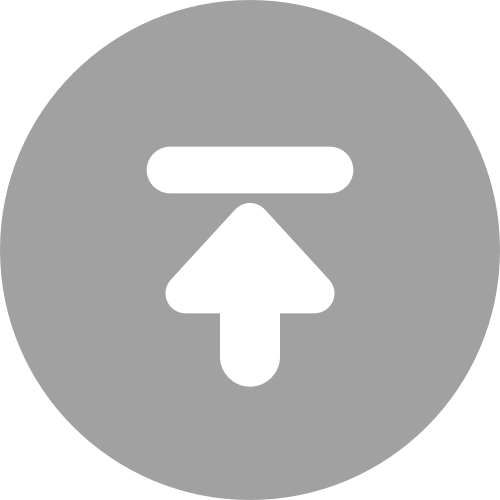Expectations and Attempts
Author:Pan Gongkai Release time:2023-11-27The Comprehensive Painting Studio, China Academy of Art was officially organized in the turn of the summer and fall of 1994. At that time, I was in charge of the academic research in the graduate school after coming back from the United States. The former principal Prof. Xiao Feng and Prof. Song Zhongyuan both advocated that the preparatory work of the Comprehensive Painting Studio and the experimental teaching afterwards should be placed in the graduate school, which was also the important research topics at that time. I accepted the task as instructed and formed a preparatory group with Chen Shouyi as the actual leader. At the beginning of the preparation, there were only few participants in poor conditions. Few colleagues knew about this experimental teaching practice. Although Mr. Lin Fengmian and other pioneers who advocated the combination of Chinese and Western cultures at the early stage of the founding of our academy, which can be said to trace to their own origin. In the 1950s, the School of Chinese and Western Painting of our academy was merged into the Department of Painting, which trained a generation of seniors such as Mr. Fang Zengxian; In the early 1980s, Mr. Shu Chuanxi inaugurated an experimental class that even made a try for enlightenment; In the past ten years, Prof. Xu Jiang and other colleagues have practiced with modern ideas; In terms of the main idea of “compatibility with the East and the West”, our academy has never been interrupted to processing in the 70 years. However, how to put this so artistic orientation and artistic ideal into the art academy teaching in a concrete and systematic way as to achieve a complete set of independent, complete and effective teaching system, which is a very difficult task.
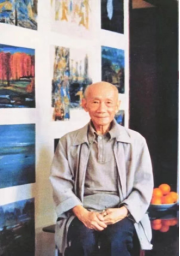
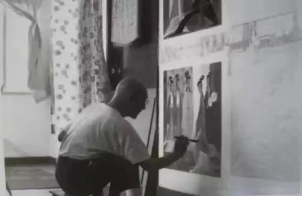
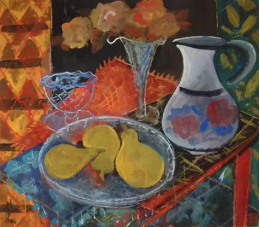
Those difficulties come from two levels. A level was from the perspective of teaching structure: the professional teaching of traditional Chinese painting, oil painting and print-making is divided by tools and materials in the original system, which has a set of distinctive basic training methods and skill-study procedures as well as a self-contained complete of styles, languages and schemata formed in the evolution of tradition. This is a traditional inheritance system that has been created and improved by many generations. Once the division of traditional Chinese painting, oil painting and print-making is broken, the original teaching system will no longer apply to status quo. How to do the basic training? How to start skill training? Once the traditional schema is abandoned, how to establish a new schema and whether it is necessary to establish a new schema, which had become a problem. Only with rules and regulations can we teach and operate. The fewer restrictions we had, the more inoperable on the practical level and the more unable to teach for us. That’s the internal reason why Western art academy has fewer to teach right now. B level was from the cultural structure: once broken the boundaries of traditional Chinese painting, oil painting and print-making, it will also break the boundaries of the eastern and western cultural traditions. With the deepening of exploration, we will inevitably encounter a deep-seated problem, which is the difference and running-in between cultural species. There has surged forward many explorers in this issue in our academy such as Mr. Lin Fengmian and other predecessors, however, few had really done well. This shows the difficulty and complexity of this issue. The so-called comprehensive painting is simply the comprehensive material painting. This concept seems to be beyond the restriction of regional culture, but it is developed from western modern painting. So far, almost all the things that can be used for reference come from western countries. Although our idea is to transcend the boundary between eastern and western cultures, it is easy to unconsciously rely on western art in practice. If we are not careful, we will lose the ideal transcendence and become only a part of western painting.
We can’t give up our expectations and attempts although we are clearly aware of the difficulties in the days ahead. Action is the most important. Only action can test our thoughts. During the preparation of the Comprehensive Painting Studio, we formulated several basic principles at the level of teaching structure after careful consideration:
1. Taking materials as the breakthrough to thoroughly break up the original system and teaching syllabus of traditional Chinese painting, oil painting and print-making. Decomposing and extracting the formal common laws and running through the teaching with four components of black and white, color, ink and material.
2. Exercises and creations were limited to a two-dimensional plane, which can have a little raised height. However, they were required to be paintings rather than installations. Meanwhile, taking expressiveness and semi-abstract language as the main body of painting.
3. Practicing with a large amount of work for forcing students to accelerate the speed of operation and the proficiency of idea performance.
4. Keep practicing the learning foundation of modeling and paying attention to experience life. It also emphasized intuitive artistic processing mode.
5. Encouraging students to learn from masters and cultivating them the quality and boldness of talents.
In the exploration of the teaching structure of comprehensive painting, the four components of black and white, color, ink and material as well as the creative teaching were the focus of thinking and practice, for which teachers spent the most efforts on. There is also a difficult adaptation process for students. During this period, Chen Shouyi, as the leader of teaching group, worked with other colleagues tirelessly. Even taking classes when they were ill, which was showing a sense of high responsibility. Finally, the first batch of undergraduates and postgraduates from our comprehensive painting studio were about to graduate. However, this experimental achievement was still very superficial. We were eagerly looking forward to the criticism from the experts of the art academies.
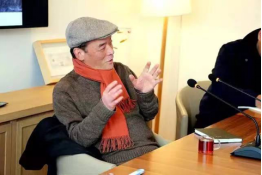
The art works with comprehensive materials have a history of nearly 100 years in the Western countries and there are many outstanding artists in China. However, it has not been set up as a formal department in art academies. Undoubtedly, as a kind of teaching experiment, comprehensive painting is very meaningful, and it will certainly become mature in the future. However, we do not hope or approve to replace the original effective teaching system of traditional Chinese painting, oil painting and print-making in their discipline individuality.

The natural ecological teaching in which various forms complement each other should be our wisest choice. Dialectical, dynamic and diversified complementary thinking mode seems to be the only correct way of thinking. At the China Academy of Art in Hangzhou, there are not only the most detailed professional settings (such as the departmental teaching of figure, landscape and flowers & birds in the Department of Chinese Painting), but also the teaching experiment that breaks the restriction of painting categories and gains the largest comprehensive span. These two seemingly opposite orientations are precisely based on a common modern concept: it is gradually forming a diversified and coexisting natural ecological environment with Chinese and Western cultural traditions as its two ends in the art field to letting it compete, integrate, and evolve naturally. This is our expectation. I’m afraid it’s also an inevitable trend in the future!
Pan Gongkai
May 5, 1999
This article was originally published in the China Academy of Art: A Journey of 90 Years, Intermedia Art, Hangzhou: China Academy of Art Press, 2018, pp. 29-30.
Translated by Roena Zhou from Chinese into English



